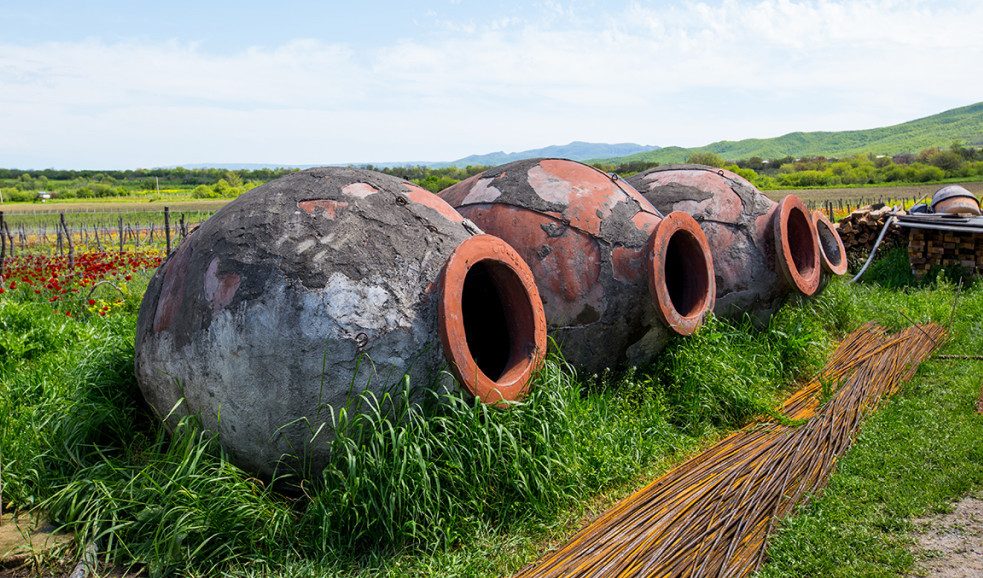Amber wines that are made in Qvevri are becoming increasingly well known in the UK – not only being imported from countries like Georgia and Armenia, but also through English winemakers who have decided to use Qvevri.
Raw, low-intervention, hand-made, artisanal, craft – when it comes to ‘naturally’ made wines, the vinicultural lexicon is as rich as it is imprecise. All of these descriptors are variously employed to distinguish wines made with minimal interference or the use of additives.
In Georgian winemaking, however, there is a clear and important defining feature and that is the Qvevri.
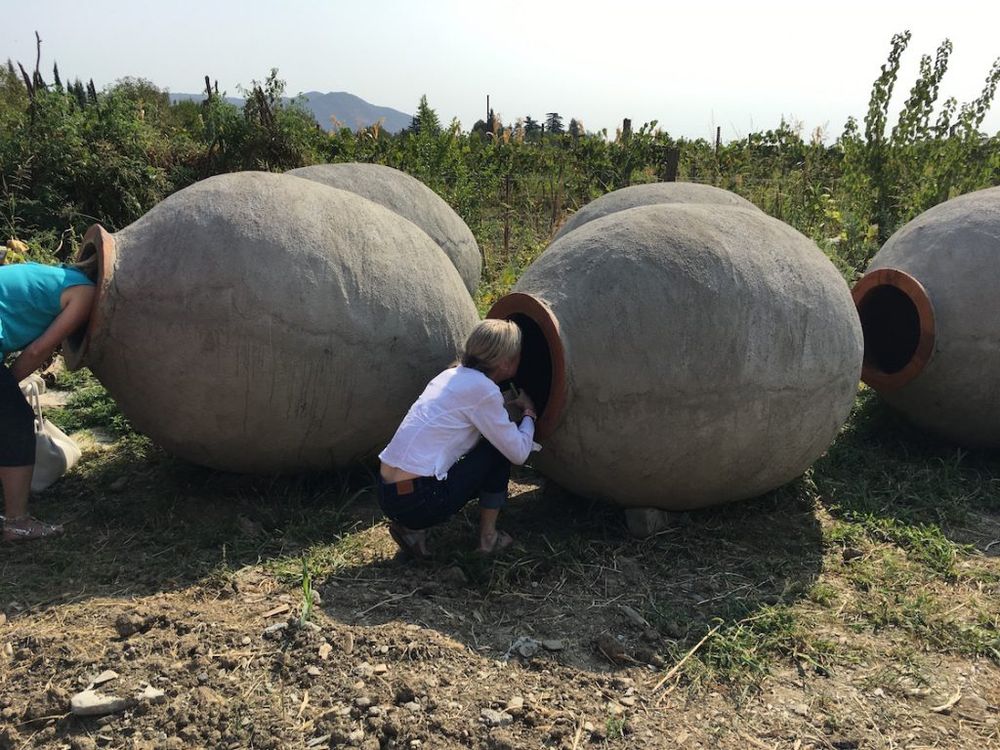
Recently fired Qvevri before they are submerged into the ground
The name refers specifically to the large lemon-shaped terracotta pot that is buried in the ground up to its neck. The word literally means ‘that which is buried’ (not to be confused with ‘Amphora’ which are not).
Somewhat bizarrely the traditional way of spelling Qvevri is Kvevri but when Georgian is typed on a standard keyboard the key allocated to this ‘k’ is actually the ‘q’ key; Georgians therefore invariably spell the word with a ‘q’ in English, the Q spelling is increasingly being favoured by the Georgian wine industry because of its graphical resemblance to the oval-shaped Qvevri.
Crucially, the entire wine making process takes place within the Qvevri, from fermentation right through to maturation, with the fermenting grape juice often being left on the skins and even grape stems (the ‘mother’) to create wines of exceptional flavour, complexity and colour.

Ancient Qvevri dating back thousands of years
Notably, these include the amber wines that are made from indigenous grape varieties, Rkatsiteli, Kisi and Mtsvane that produce the characteristically dry but full-bodied, aromatic orange wines. Red wines, often made from the Saperavi grapes, are also produced in Qvevri, to produce wines that have an inky purple colour with intense aromatics and dense, supple texture. To learn more about the different wines of Georgia click here.
Despite a recent revival in these methods, yields are low and currently account for less than 10 per cent of Georgia’s total wine production which adds to their cachet.
The Qvevri themselves are made today by less than a handful of surviving master craftsmen; Such is their importance to the history of winemaking that the United Nations placed them on the UNESCO Intangible Cultural Heritage list in 2014.
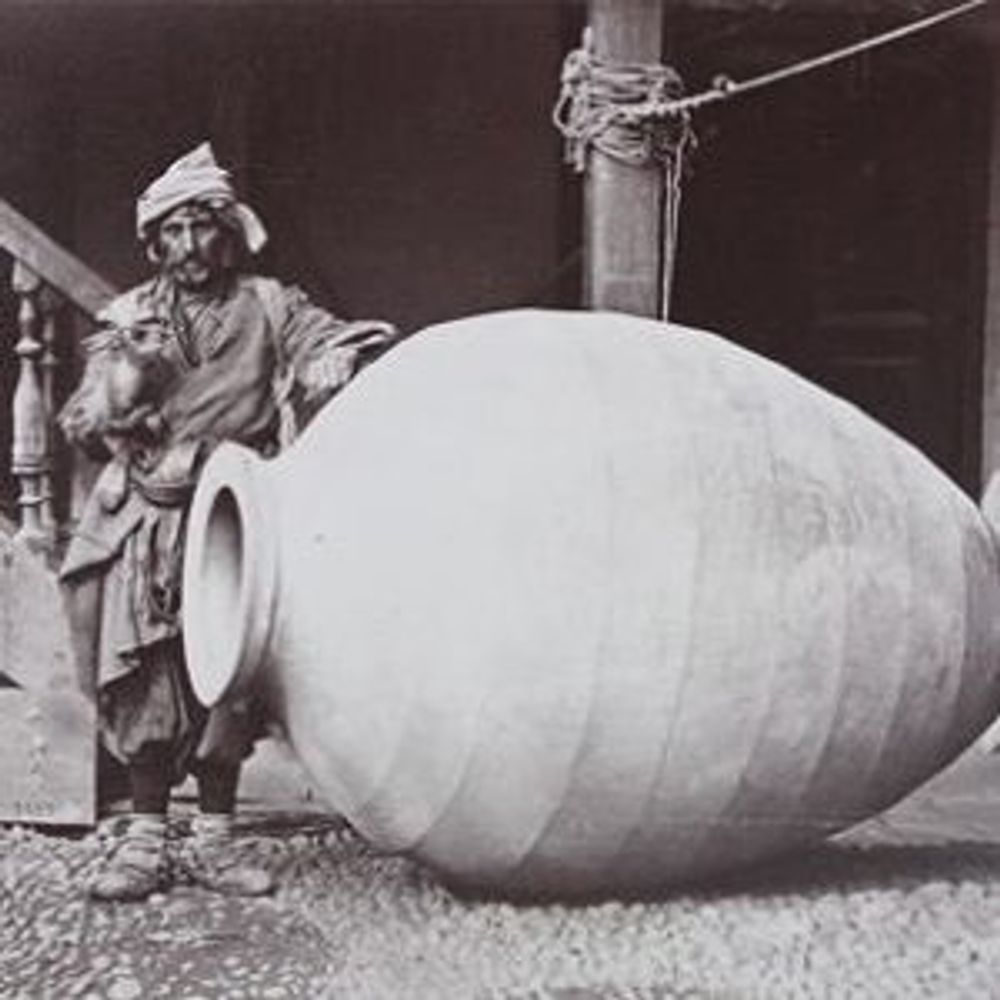
It takes on average three months to make one 2000 litre Qvevri (firing alone takes seven to eight days). A giant coil pot, its coils are added slowly and gradually to maintain the correct tension and strength needed to hold the shape and weight of the clay.
After firing, while still warm, it is coated on the inside with beeswax to clog the pores without sealing them completely, to allow some air to pass through during fermentation. Pure beeswax also has waterproofing and sterilizing properties that make the Qvevri more hygienic and easy to clean. A limestone paint or concrete outer coating is added to protect it during transportation.

Think you’ve got it tough? Cleaning a Qvevri takes a whole day of scrubbing with this old fashioned brush
Given Georgia’s reputation as the ‘Cradle of Wine’, it is impossible to ignore associations with creation, nurturing and birth. Like a giant egg, the vessel is sunken into the earth to prevent it from cracking or breaking from build-up of pressure during fermentation. There it will protect its embryonic wine for an average six-to-nine month gestation, safe from external threats such as potential earthquake and fluctuating temperatures.
Qvevri are used differently according to which part of Georgia you are in, often determined by the climate of the region. As the regions get hotter, the more skins and stems tend to be fermented with the grapes – if stems are left in the wine in the cooler regions it can produce wines that are far too ‘green’ and harsh.
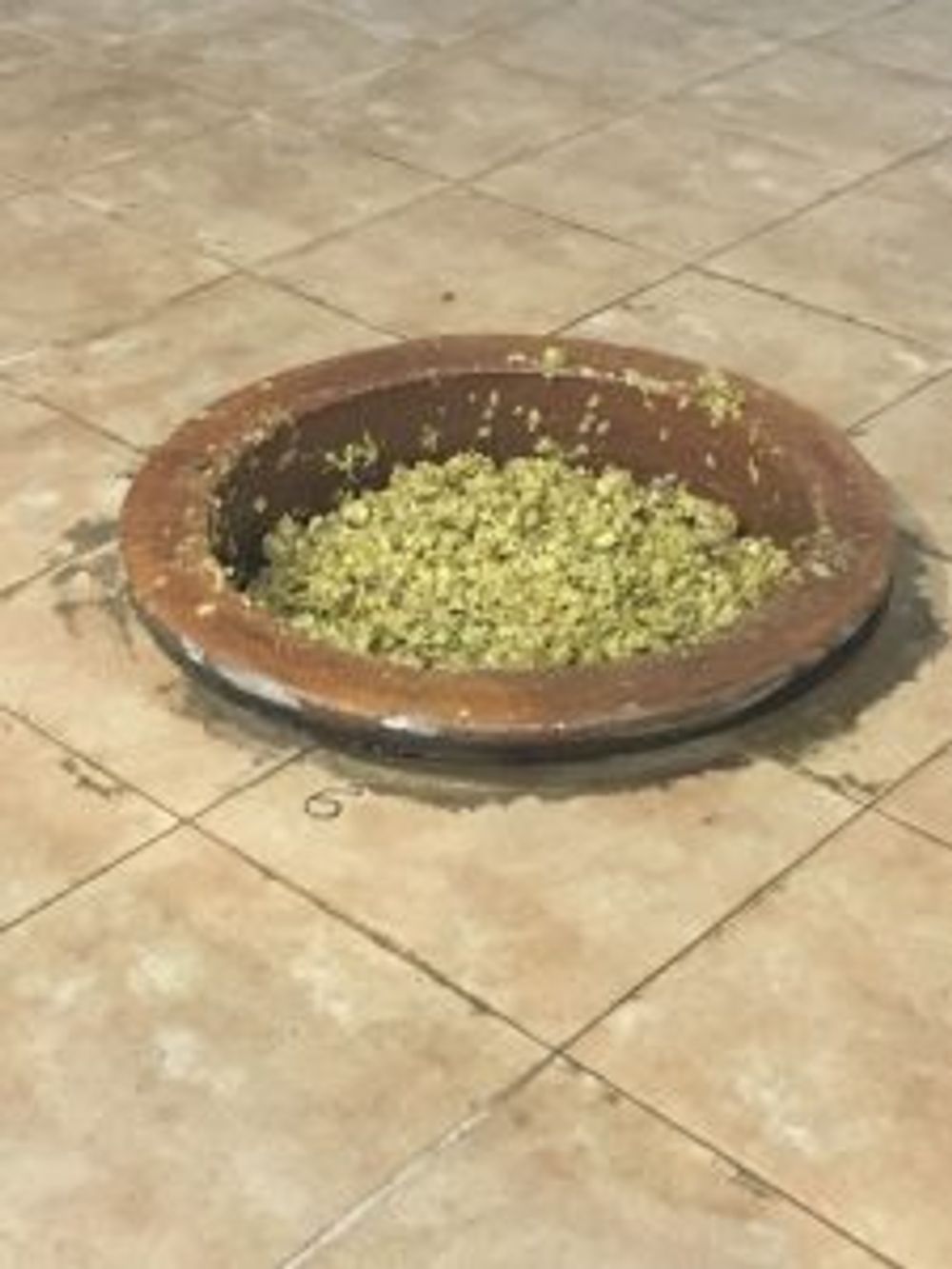
Before the cap falls
Alcoholic fermentation begins naturally after a few days and continues for two to four weeks at which point the cap falls. The fermenting grapes are ‘punched down’ twice a day during fermentation. Once the cap falls, the red wines are generally removed from the lees, or ‘mother’ while the whites are left with her.
A stone lid is placed over the top of the Qvevri and malolactic fermentation begins spontaneously soon afterwards.
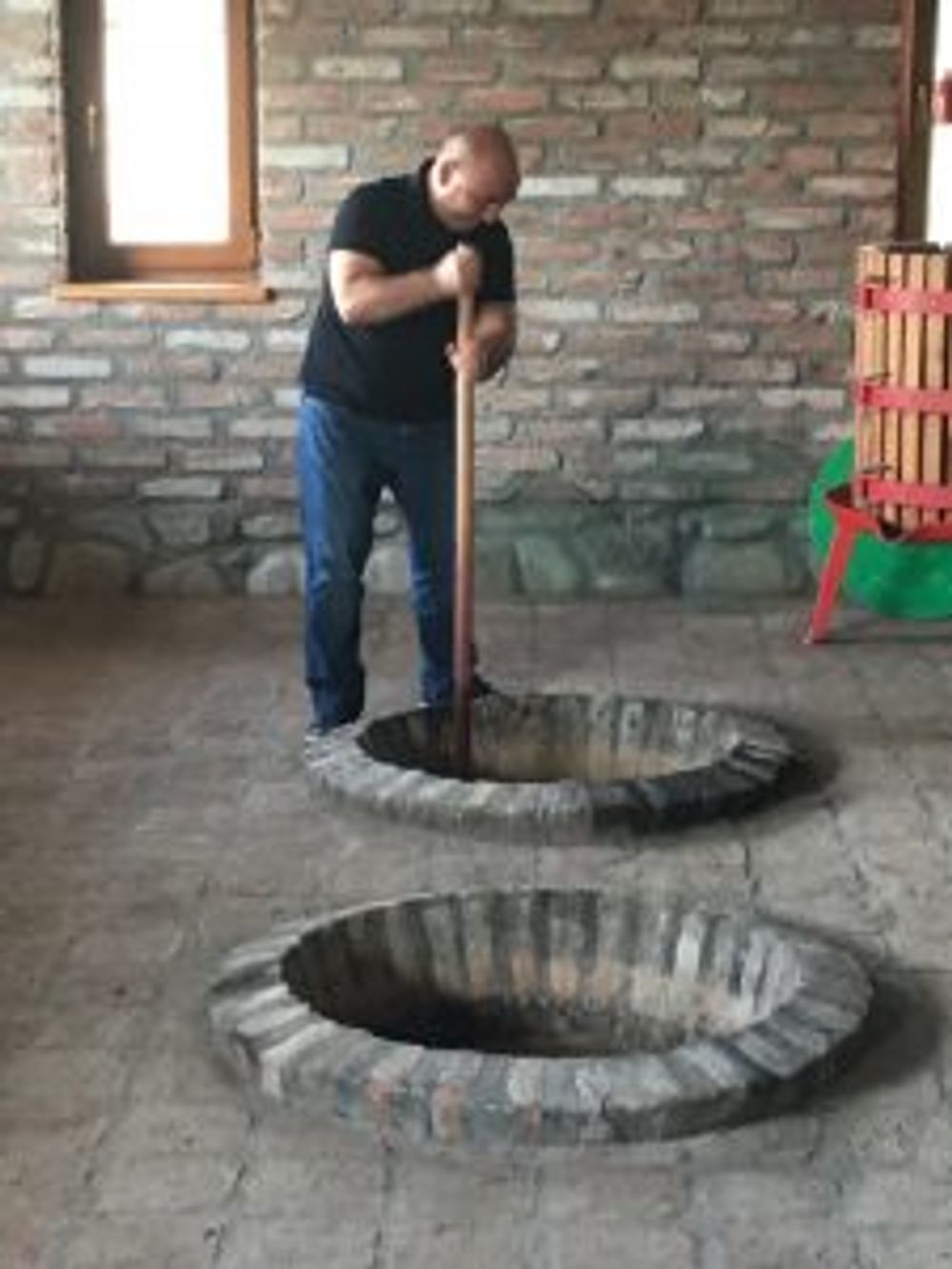
Punching down: Gogi Dakishvili is one of the most skilled and influential winemakers in Georgia
They are then left to mature for an average of six months during which time the unwanted lees, seeds and stalks fall into the nipple where they have limited contact with the wine.

Qvevri during fermentation
After this time, the Qvevri is opened, to reveal the delicious, bright liquid. It is then put on its feet (either by pump, gravity or more low-tech ladles), and transferred into freshly cleaned Qvevri, barrels or other storage vessels until it is ready for bottling. At the end of the cycle, the empty Qvevri is scrubbed thoroughly from the inside with a brush made from St John’s Wort to ensure it is sterile before it is filled again.
There are varied and often opposing views on the use of additives, including cultured yeasts, enzymes and sulphates. Some growers eschew them entirely while others seem to adopt a more discretionary approach. Either is the prerogative of the winemaker and subject to ever-changing new developments, consumer demands and legislation. In the meantime, it seems that the essential art of Qvevri winemaking is likely to remain as it has for the past 8000 years.
